Abstract
We studied respiratory mechanics and phrenic nerve and diaphragm function in 12 patients on the day before and eight to 13 days after coronary artery bypass grafting. The average vital capacity, functional residual capacity, and total lung capacity decreased by 20.5%, 9.5%, and 14.7% respectively after operation. Eleven patients showed less negative maximum inspiratory mouth pressures at any given lung volume after surgery and the magnitude of the change correlated with the reduction in total lung capacity. In 11 of the 12 patients the conduction times of the right and left phrenic nerves did not change substantially after operation and the ratio of inspiratory electrical activity (Edi) of left and right hemidiaphragms was similar before and after the procedure. One patient, however, showed a considerable increase in left phrenic nerve conduction time and a reduction in the left to right Edi ratio postoperatively. In three patients diaphragm function was also assessed by changes in transdiaphragmatic pressure during supramaximal phrenic nerve stimulation and voluntary increase in inspired volume; in none of the three patients did the transdiaphragmatic pressure swings show any significant change in the postoperative period. These data indicate that phrenic nerve paralysis only occasionally accounts for the postoperative loss of lung volume after coronary artery bypass grafting surgery. The mechanism of these abnormalities therefore remains to be determined.
Full text
PDF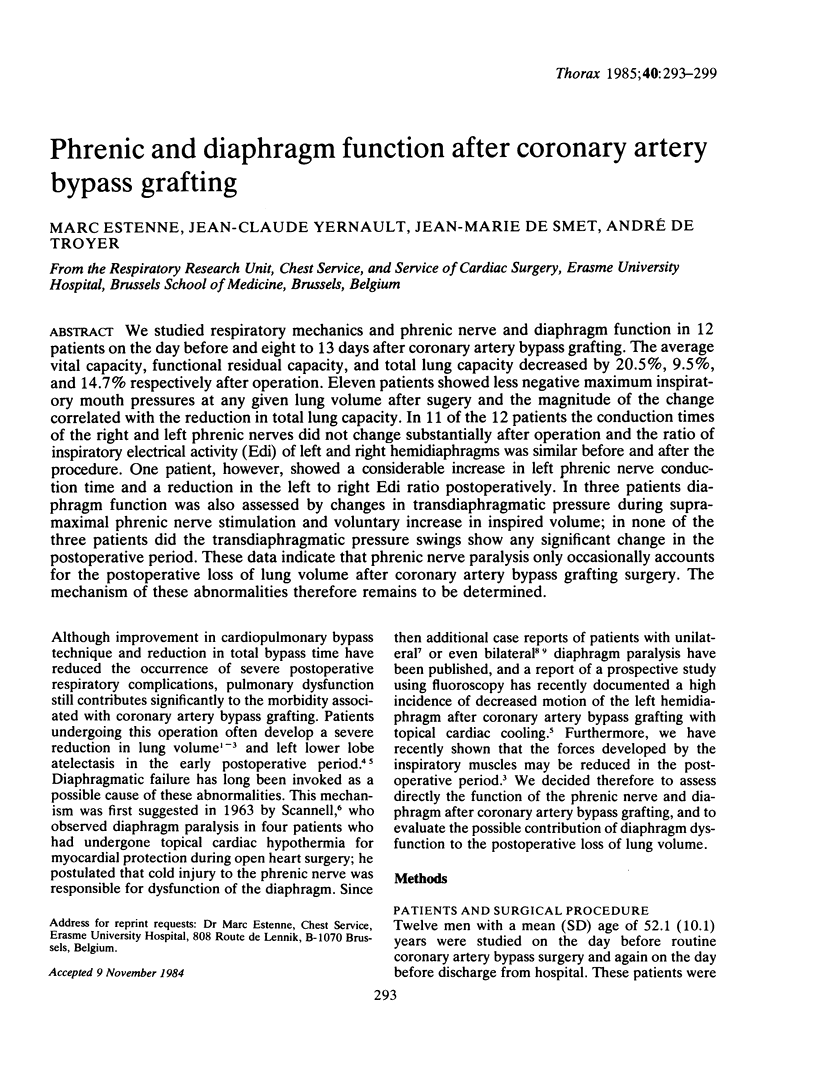
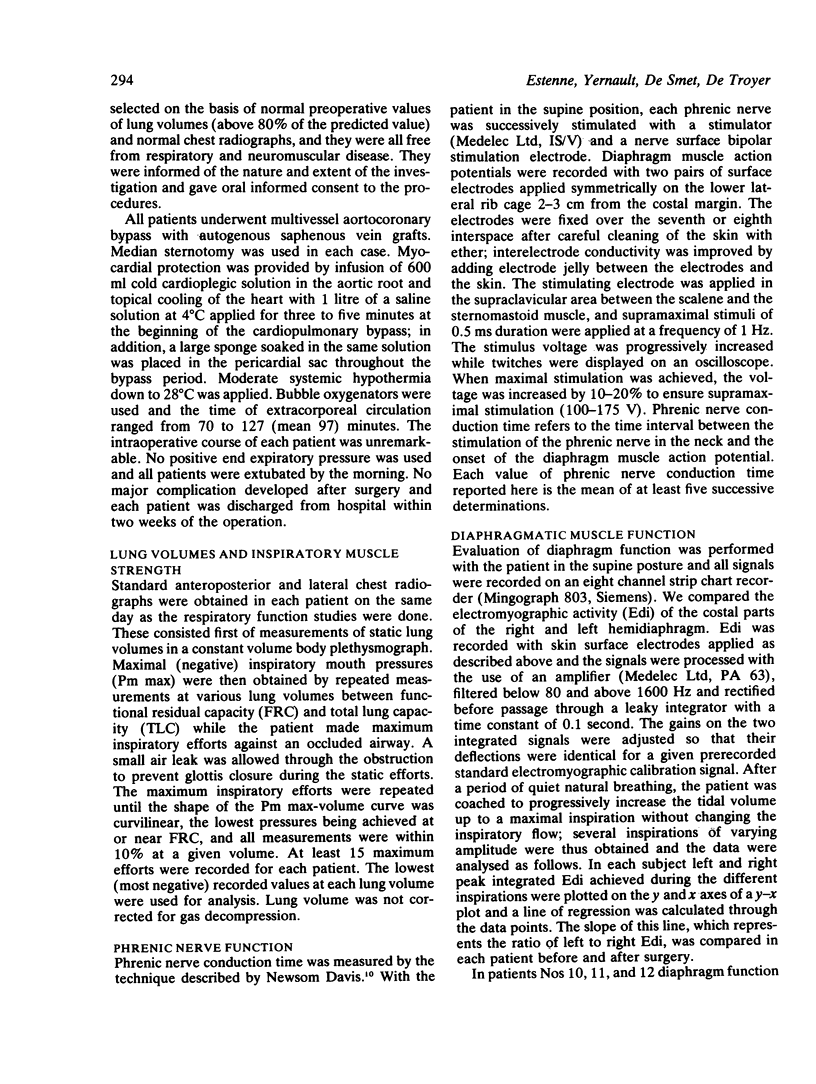
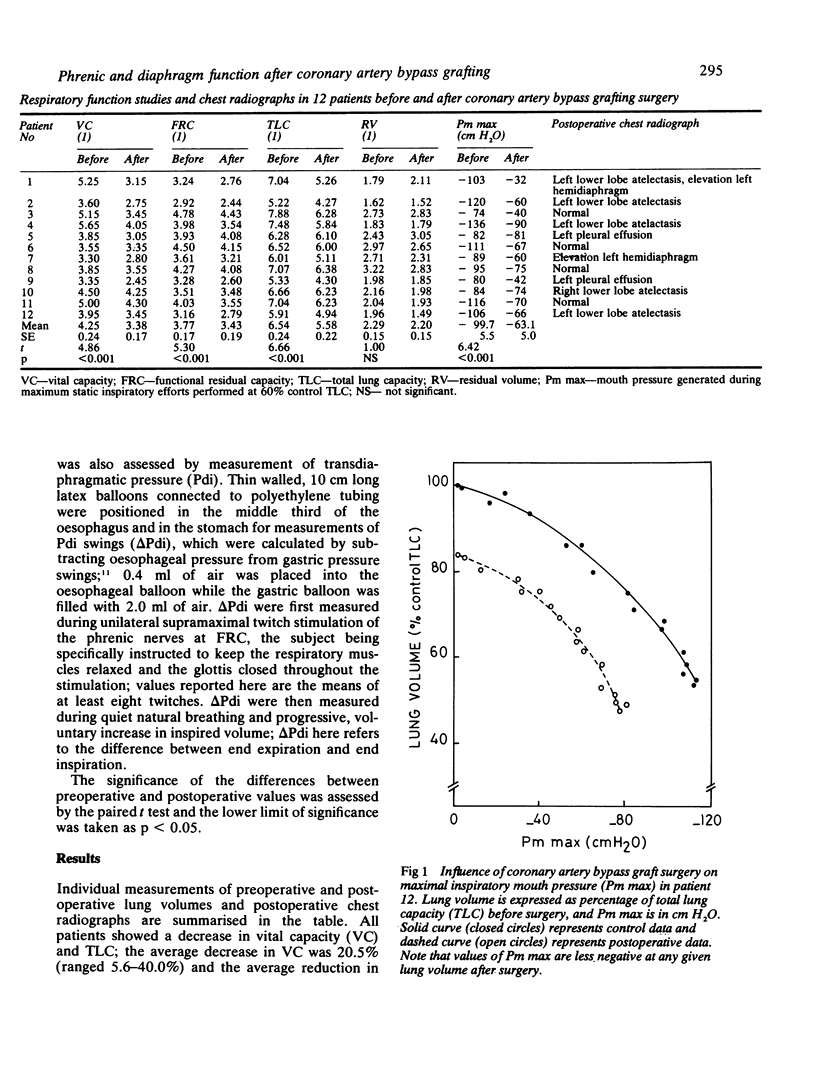
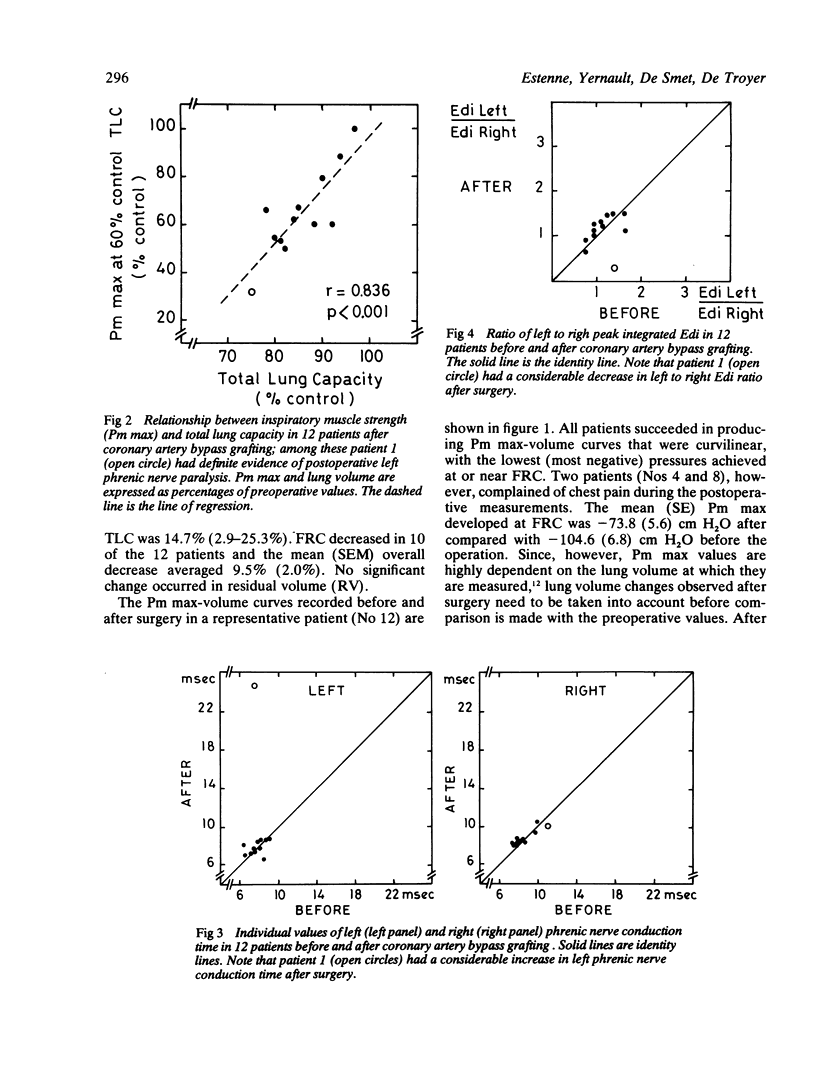
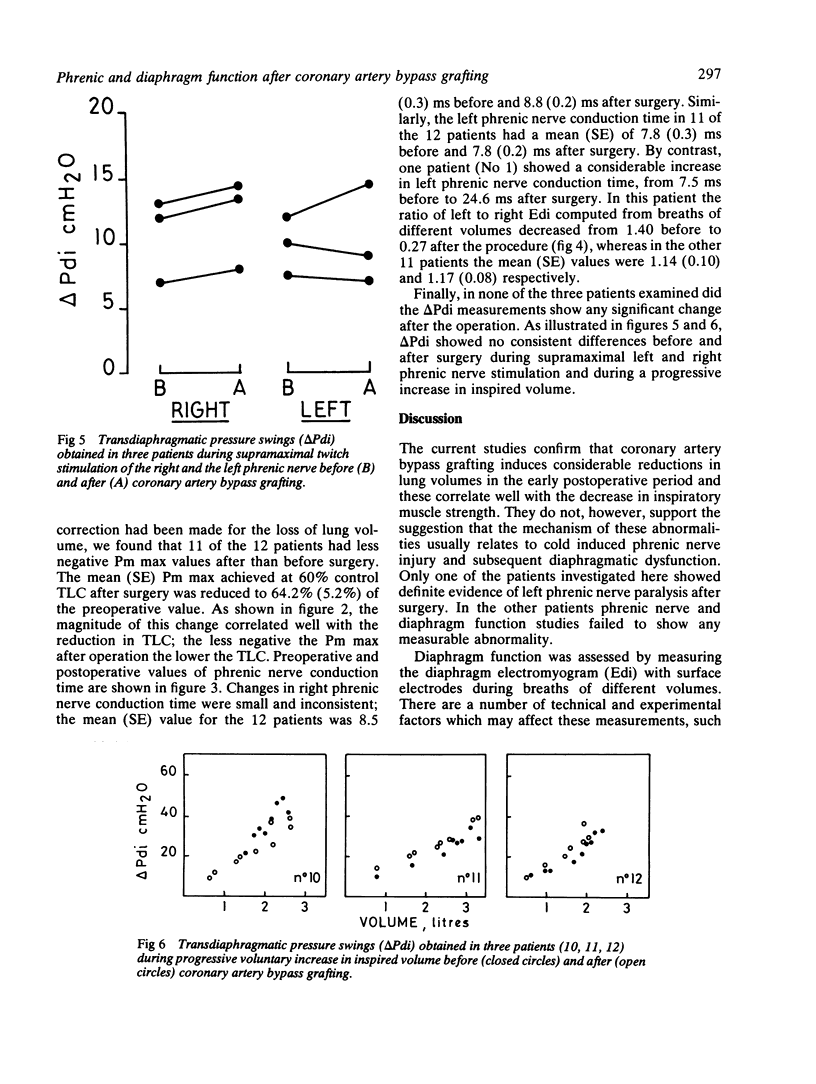
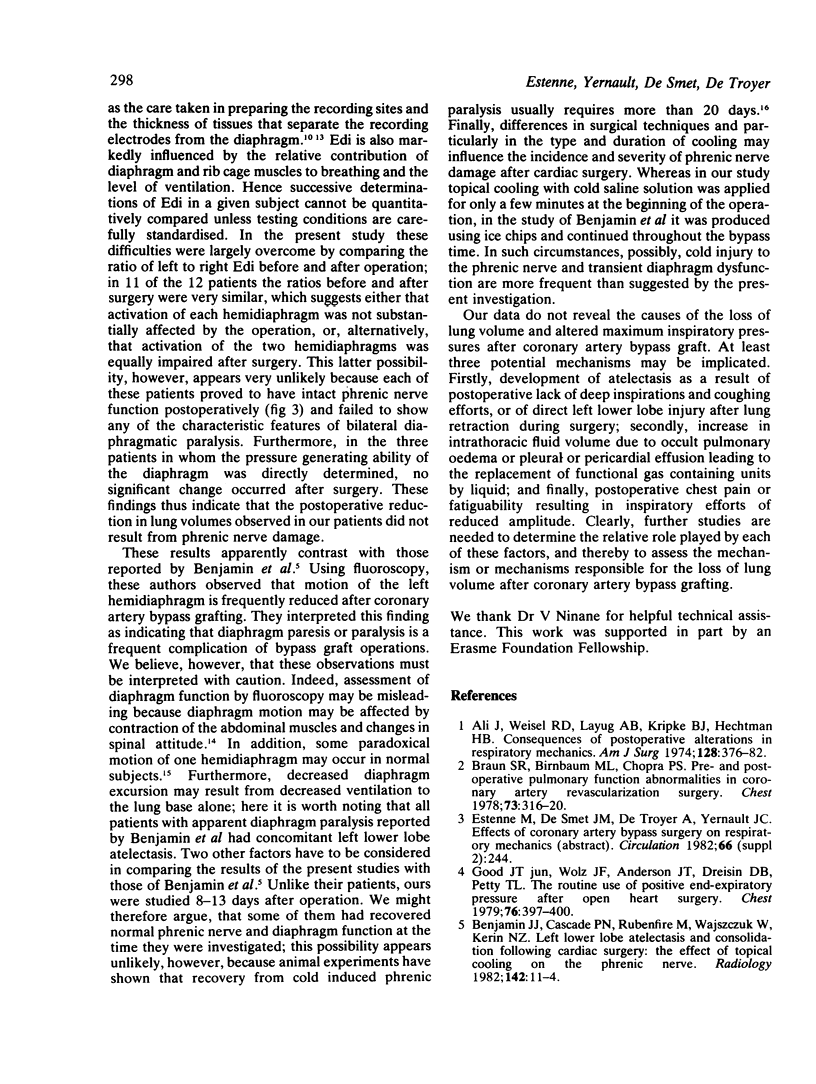
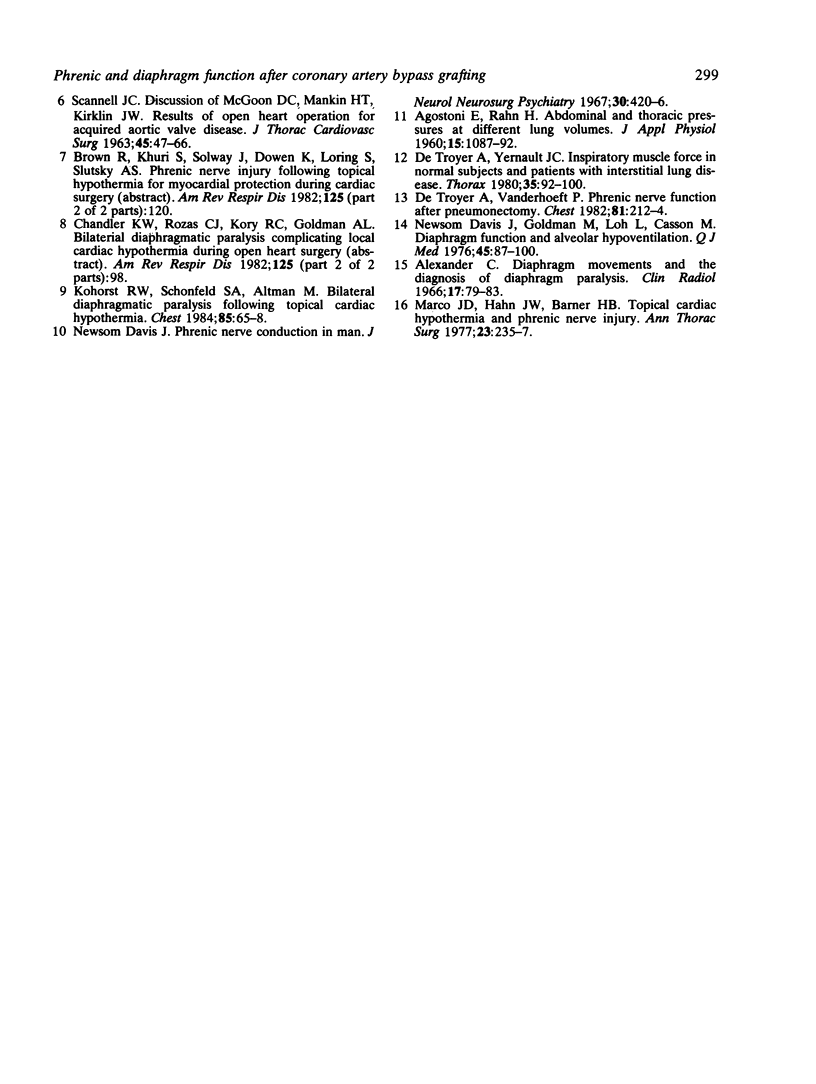
Selected References
These references are in PubMed. This may not be the complete list of references from this article.
- AGOSTONI E., RAHN H. Abdominal and thoracic pressures at different lung volumes. J Appl Physiol. 1960 Nov;15:1087–1092. doi: 10.1152/jappl.1960.15.6.1087. [DOI] [PubMed] [Google Scholar]
- Alexander C. Diaphragm movements and the diagnosis of diaphragmatic paralysis. Clin Radiol. 1966 Jan;17(1):79–83. doi: 10.1016/s0009-9260(66)80128-9. [DOI] [PubMed] [Google Scholar]
- Ali J., Weisel R. D., Layug A. B., Kripke B. J., Hechtman H. B. Consequences of postoperative alterations in respiratory mechanics. Am J Surg. 1974 Sep;128(3):376–382. doi: 10.1016/0002-9610(74)90176-7. [DOI] [PubMed] [Google Scholar]
- Benjamin J. J., Cascade P. N., Rubenfire M., Wajszczuk W., Kerin N. Z. Left lower lobe atelectasis and consolidation following cardiac surgery: the effect of topical cooling on the phrenic nerve. Radiology. 1982 Jan;142(1):11–14. doi: 10.1148/radiology.142.1.6975951. [DOI] [PubMed] [Google Scholar]
- Braun S. R., Birnbaum M. L., Chopra P. S. Pre- and postoperative pulmonary function abnormalities in coronary artery revascularization surgery. Chest. 1978 Mar;73(3):316–320. doi: 10.1378/chest.73.3.316. [DOI] [PubMed] [Google Scholar]
- Cheitlin M. D. Cardiovascular trauma. Part II. Circulation. 1982 Jul;66(1):244–247. doi: 10.1161/01.cir.66.1.244. [DOI] [PubMed] [Google Scholar]
- Davis J. N. Phrenic nerve conduction in man. J Neurol Neurosurg Psychiatry. 1967 Oct;30(5):420–426. doi: 10.1136/jnnp.30.5.420. [DOI] [PMC free article] [PubMed] [Google Scholar]
- Davis J., Goldman M., Loh L., Casson M. Diaphragm function and alveolar hypoventilation. Q J Med. 1976 Jan;45(177):87–100. [PubMed] [Google Scholar]
- De Troyer A., Vanderhoeft P. Phrenic nerve function after pneumonectomy. Chest. 1982 Feb;81(2):212–214. doi: 10.1378/chest.81.2.212. [DOI] [PubMed] [Google Scholar]
- Good J. T., Jr, Wolz J. F., Anderson J. T., Dreisin R. B., Petty T. L. The routine use of positive end-expiratory pressure after open heart surgery. Chest. 1979 Oct;76(4):397–400. doi: 10.1378/chest.76.4.397. [DOI] [PubMed] [Google Scholar]
- Kohorst W. R., Schonfeld S. A., Altman M. Bilateral diaphragmatic paralysis following topical cardiac hypothermia. Chest. 1984 Jan;85(1):65–68. doi: 10.1378/chest.85.1.65. [DOI] [PubMed] [Google Scholar]
- Marco J. D., Hahn J. W., Barner H. B. Topical cardiac hypothermia and phrenic nerve injury. Ann Thorac Surg. 1977 Mar;23(3):235–237. doi: 10.1016/s0003-4975(10)64115-x. [DOI] [PubMed] [Google Scholar]
- de Troyer A., Yernault J. C. Inspiratory muscle force in normal subjects and patients with interstitial lung disease. Thorax. 1980 Feb;35(2):92–100. doi: 10.1136/thx.35.2.92. [DOI] [PMC free article] [PubMed] [Google Scholar]


